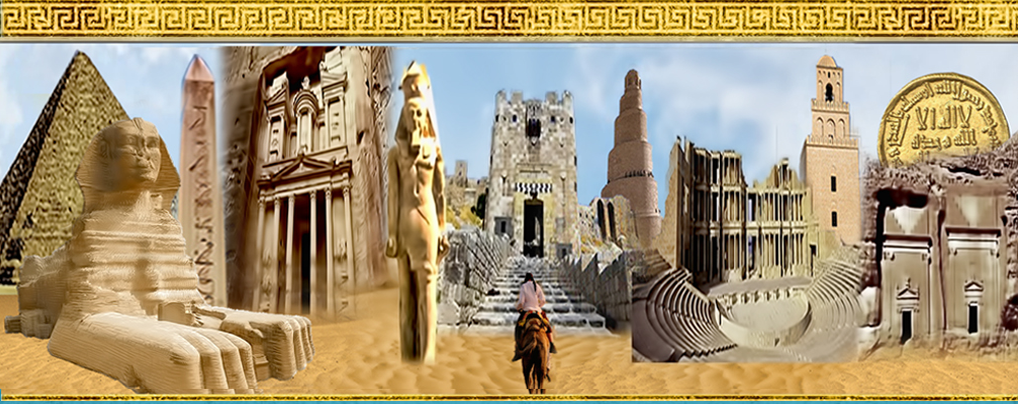Journal of the General Union of Arab Archaeologists

Abstract
أغطية شعر الوجه واللحية: دوافع إطلاقها وتغطيتها فى عقيدة المصرى القديم وبلاد ما بين النهرين [Ar]
عرف شعر الوجه واللحية فى الشرق الأدنى القديم بشكل عام وفى مصر القديمة وبلاد ما بين النهرين على وجه الخصوص، إلا أن عملية تغطية شعر الوجه واللحيه فى هاتين الحضارتين من الموضوعات التى لا تزال بحاجة إلى مزيد من الدراسة فيما يختص بالاسم ومرادفاته ومخصصاته من جهة، وذكر اللحيه والذقن فى المناظر والنصوص من جهة أخرى، وأسباب إطلاق شعر الوجه والذقن ودوافع تغطيته من جهة ثالثة، وأشكال هذه الأغطية كما ظهرت بالتماثيل فى كلتا الحضارتين من جهة رابعة. حيث اعتمدت الباحثة فى دراستها على المنهج الوصفي القائم على التحليل النقدىلأشكالها المختلفة. كما اعتمدت على المنهج التحليلى في عرض الآراء المختلفة حول تربية شعر الوجه واللحية وأغطيتهما فى سياقات مختلفة فى كلتا الحضارتين.وأخيراً تطرقت الدراسة إلى أبرز النتائج، والتى منها: أن الذقون واللحى وأغطيتها قد عُرفتا بالعديد من الأسماء والمدلولات اللغوية فى اللغة المصرية والسومرية والأكادية، كما تطورت أشكالها وأنواعها فى كل من مصر وبلاد ما بين النهرين عبر العصور. وميزت الدراسة من خلال شكل اللحيه بين العرق المصرى والعراقى والليبى والسورى، كما ميزت الدراسة بين مرتبة المصري القديم سواء أكان ملكًا أم فردًا عاديًا من خلال شكل اللحية ومظهرها. وميّز العراقى القديم بين الكاتب الآشورى والكاتب الآرامى من حيث إطلاق اللحيه أو حلقها. علاوة على ذلك، خلصت الدراسة إلى تعدد دوافع إطلاق اللحية بين كونها مقياسًا للذكورة والنضج، ومقياسًا للحكم والسلطة، ومقياسًا للأبوة والشيخوخة، ومقياساً للعمر، ومقياساً للقوة والهيبة، ومقياساً للتدين. وتعددت دوافع تغطيتها ما بين تثبيت اللحية والشارب، ومنع تعرضها للأتربة، وللتستر والتخفى، وللشعور بالدفء، وللتعبير عن الحداد والحزن، وبصفتها مقياسًا للقداسة والطهارة. وتباينت أنواع أغطية اللحية من خلال الدراسة ما بين غطاء لربع الوجه (الذقن واللحية)، وغطاء لثلث الوجه (اللحية والذقن والفم)، وغطاء لنصف الوجه (اللحية والذقن والفم والأنف)، وغطاء قناعىي لكامل الوجه (باستثناء فتحات العينين).
[En] Facial hair and beards were known in the ancient Near East, especially in ancient Egypt and Mesopotamia. However, covering facial hair and beard in both civilizations is a topic that still needs extensive study regarding the name, appearance in scenes and texts, reasons for rising, and motives for covering in both civilizations. In this paper, the researcher adopted the descriptive approach based on a critical analysis of the various shapes. She also relied on the descriptive analytical approach of presenting facial hair and beard coverings in different contexts. The study concluded that the beard and its coverings were known by many names and linguistic connotations in the Egyptian, Sumerian, and Akkadian languages. The beard shapes in Egypt and Mesopotamia were developed through the ages as they distinguished the Egyptian, Iraqi, Libyan, or Syrian races. The ancient Egyptian distinguished between a king and an individual through the beard shapes. The ancient Iraqi also distinguished between the Assyrian writer and the Aramaic writer regarding rising or shaving the beard. The motives for growing a beard were measures of masculinity and maturity, judgment and authority, parenthood and old age, power and prestige, and religiosity. The motives of covering the beard included fixing the beard and mustache, protecting them from dirt and dust, concealment and incognito, feeling warm, expressing mourning and sadness, and measures of holiness and purity. The types of beard coverings varied and included covering the quarter, third, half, and entire face.
Recommended Citation
Attalla, Reda
(2022)
"FACIAL HAIR AND BEARD COVERINGS MOTIVES FOR GROWTH AND COVERAGE IN THE ANCIENT EGYPTIAN AND MESOPOTAMIAN DOCTRINE,"
Journal of the General Union of Arab Archaeologists: Vol. 7:
Iss.
1, Article 7.
Available at:
https://digitalcommons.aaru.edu.jo/jguaa/vol7/iss1/7

